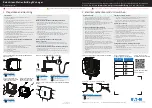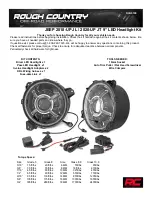
09 Wheels and tires
09
297
Tire inflation – checking pressure
Inflation pressure should be checked when
the tires are cold.
Cold tires
The tires are considered to be cold when
they have the same temperature as the
surrounding (ambient) air.
This temperature is normally reached after the
vehicle has been parked for at least 3 hours.
After driving a distance of approximately
1 mile (1.6 km), the tires are considered to be
hot. If you have to drive farther than this dis-
tance to pump your tire(s), check and record
the tire pressure first and add the appropriate
air pressure when you get to the pump.
If checking tire pressure when the tire is hot,
never "bleed" or reduce air pressure. The
tires are hot from driving and it is normal for
pressures to increase above recommended
cold pressures. A hot tire at or below recom-
mended cold inflation pressure could be sig-
nificantly under-inflated.
To check inflation pressure:
1. Remove the cap from the valve on one
tire, then firmly press the tire gauge onto
the valve.
2. Add air to reach the recommended air
pressure.
3. Replace the valve cap.
CAUTION
•
After inflating the tires, always reinstall
the valve cap to help avoid damage to
the valve from dirt, gravel, etc.
•
Use plastic valve caps only. Metal caps
could corrode and become difficult to
remove.
4. Visually inspect the tires to make sure
there are no nails or other objects
embedded that could puncture the tire
and cause an air leak.
5. Check the sidewalls to make sure there
are no gouges, cuts, bulges or other
irregularities.
6. Repeat this procedure for each tire,
including the spare.
NOTE
•
If you overfill the tire, release air by
pushing on the metal stem in the cen-
ter of the valve. Then recheck the
pressure with your tire gauge.
•
Some spare tires require higher infla-
tion pressure than the other tires. Con-
sult the tire inflation pressure table,
see Tire inflation – pressure table
(p. 300) or see the inflation pressure
placard.
Related information
•
Tire specifications (p. 298)
•
Tire inflation – pressure table (p. 300)
•
Tires – storage and age (p. 289)
•
Tires – tread wear indicator (p. 290)
Summary of Contents for XC 70
Page 1: ...WEB EDITION OWNER S MANUAL I n f o r ma t i o nP r o v i d e db y...
Page 2: ...I n f o r ma t i o nP r o v i d e db y...
Page 12: ...INTRODUCTION I n f o r ma t i o nP r o v i d e db y...
Page 27: ...SAFETY I n f o r ma t i o nP r o v i d e db y...
Page 65: ...INSTRUMENTS AND CONTROLS I n f o r ma t i o nP r o v i d e db y...
Page 67: ...03 Instruments and controls 03 65 I n f o r ma t i o nP r o v i d e db y...
Page 68: ...03 Instruments and controls 03 66 I n f o r ma t i o nP r o v i d e db y...
Page 125: ...CLIMATE I n f o r ma t i o nP r o v i d e db y...
Page 139: ...LOADING AND STORAGE I n f o r ma t i o nP r o v i d e db y...
Page 153: ...LOCKS AND ALARM I n f o r ma t i o nP r o v i d e db y...
Page 176: ...DRIVER SUPPORT I n f o r ma t i o nP r o v i d e db y...
Page 247: ...STARTING AND DRIVING I n f o r ma t i o nP r o v i d e db y...
Page 289: ...WHEELS AND TIRES I n f o r ma t i o nP r o v i d e db y...
Page 323: ...MAINTENANCE AND SERVICING I n f o r ma t i o nP r o v i d e db y...
Page 368: ...SPECIFICATIONS I n f o r ma t i o nP r o v i d e db y...
Page 370: ...11 Specifications 11 368 Location of labels I n f o r ma t i o nP r o v i d e db y...
Page 385: ...11 Specifications 11 383 I n f o r ma t i o nP r o v i d e db y...
Page 394: ...12 Index 12 392 I n f o r ma t i o nP r o v i d e db y...
















































